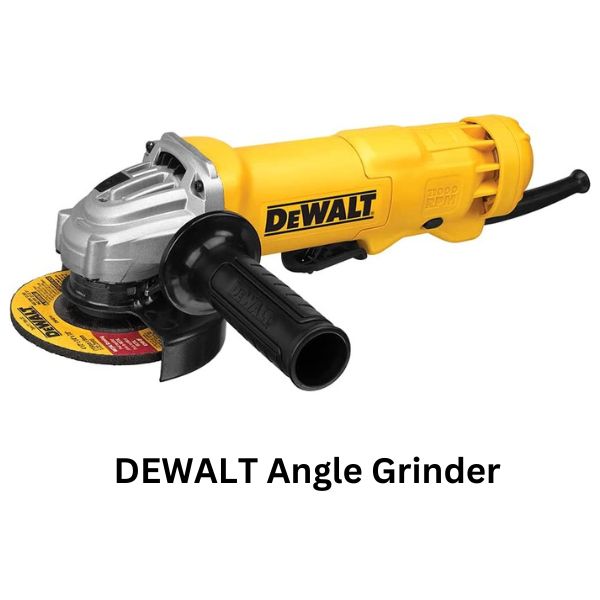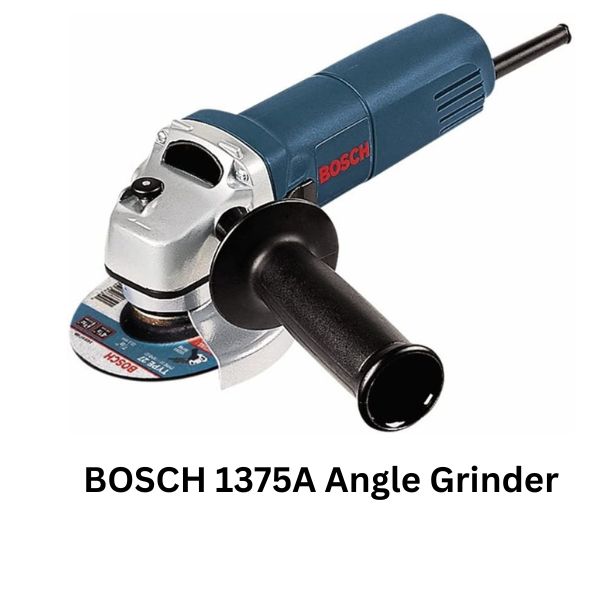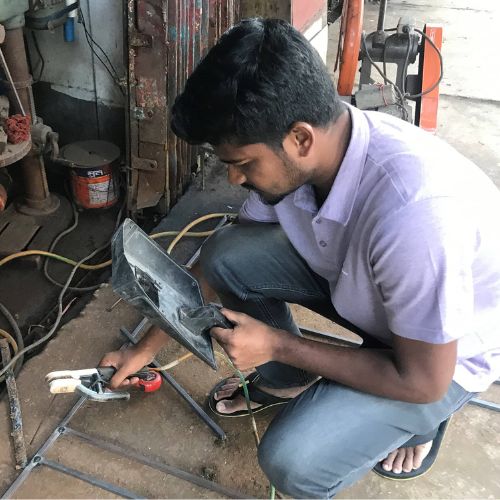Welding galvanized steel is a difficult task. The difficulty level increases when you try using mig welder to weld galvanized steel.
Though it is possible to mig weld galvanized steel by following some tricks, you should be careful while welding because galvanized steel is covered with zinc coating.
So, we will only stick to answering the queries-
- is it possible to weld galvanized steel with mig welder?
- How to safely mig weld galvanized steel
- settings and techniques for best result
- electrode and gas to use for better weld quality
Can You weld Galvanized Steel With Mig
Yes, you can mig weld galvanized steel. It is not as mig welding other metal like stainless steel or aluminum welding. You will have to follow some tricks and tips to mig weld perfectly.
It would be good if we could say that the mig welding face no challenges in welding galvanized steel. But it is not.
- Fist challenge you will face is the health issue. You should know that galvanized steel is coated with zinc and zinc has very low melting point. As a result when you apply heat through mig gun, it will turn the zinc into white fumes, which if inhaled, will suffer you from metal fever.
- Second challenge you will face is related to weld quality. Zinc can make you weld quality poor making lead in cracking on the base metal. Also zinc results in lack of fusion and thus making the joint poor. Zinc is also responsible for excessive porosity and inclusions on the weld.
- Another challenge is that, you can not use solid wire in mig welding galvanized steel. As solid wire doesn’t contain flux and without flux puddle can’t be cleaned as a result great amount of porosity and spatter will be produced. If you use solid wire, you will encounter 3 problems.
- It will create porosity that in turn would damage the weld joint making it fragile.
- Welding with solid wire would create excessive spatter. The spatter would scatter in everywhere on the base metal and mig gun tips also. Spatter in the torch tip would reduce the wire feeding which in turn would create wire ball inside the machine. It is very damaging for the welder machine. Machine could stop working because of that. The problem is termed as birdnesting.
- Spatter also jam the shielding gas and prevent it from flowing correctly. The result is irregular arc and puddle. The ultimate result is fragile welding joint.
Solution: There is a solution to these all problems. The problems occur because of zinc coating on the on galvanized steel. If you grind the zinc off the galvanized steel by grinder machine, by metal file or though sanding then galvanized metal would be free from zinc and the problems mentioned above will be solved.
But is it easy to get the zinc out of the galvanized steel easily. We have separate article over how to grind off most of the zinc from galvanized steel. Check it out!
How to Mig Weld Galvanized Steel
We have discussed the problems and challenges related to mig welding galvanized steel. Now lets discuss how to do it correctly.
Requirements
- A grinder machine
- A wire brush and cloth
- A high voltage mig welder (200A+ will be better)
- Flux cored wire
- Shielding gas
- Anti spatter spray or gel
- Respirator helmet
Process: First of all remove the layer of zinc from the galvanized steel using a grinder machine. Try to grind 1-4 inch over the galvanized steel to get better-quality weld. After grinding clean the surface with wire brush and cloth properly as any dust, dirt over the base metal coming under the torch would hamper the arc and puddle.
Check the following grinder for best result.
Dewalt grinder: This one best for deep grinding. It has 4.5inch disk and 11000 rpm motor. Dust ejection system is a great feature in this one.
Bosche 1375A is another grinder with 4.5inch disk and 11000rpm motor. It is best for versatile use.
Then weld as usual like welding other metal (stainless steel or aluminum). It is that simple if you grind the zinc off first.
But if you want to mig weld galvanized steel without grinding the zinc then follow the following steps.
- Step-1: Choose a mig welder that is powerful enough to weld galvanized steel (200A+ mig welder is enough). Set the welder with higher voltage (24v or more). Set wire speed also in proportion to voltage. Use spray transfer mode to weld galvanized steel with mig welder. Spray transfer mode would create hot arc penetrating the zinc coating
- Step-2: Place the clamp on a clean metal not coated with color or any dirt. Don’t use galvanized steel as earthing.
- Step-3: Check the shielding gas tank is properly connected to welder machine. Also check if the wire feeder is working properly. Check the torch and make sure there is no spatter on the tip of the torch.
- Step-4: Hold the torch on workpiece and start welding. Go slowly first. Your transfer speed should be slower(20% to 30%) and also you must take time to weld the galvanized steel pass after pass. It is better to use torch manipulation technique where torch is pointed in front of arc not over it. Hold the mig torch in 45 degree angle and go from right to left in flat or horizontal position.
- Step-5: Start with a small tack weld in the corner of workpieces. When workpieces are set align, weld for joining the metals and increase the voltage and wire speed at least by 5% for deeper penetration. It would help burn the zinc and penetrate to the base.
- Step-6: In case of butt joint, leave wider root gap and in tee or lap joint, leave small gap for better penetration.
- Step-7: Beware of the spatter. If there is any spatter (sure will be) you may use anti spatter spray or anti spatter gel to reduce the spatter from torch tip and workpiece.
- Finally: After welding is completed grind the surface to level the welded area. It would make the welding are appear smooth and professional.
Few tips to follow:
Wire selection:
Select flux cored wire for welding galvanized steel. From my experiences, I have found that ER70S-G is better for mig welding galvanized steel. It creates less porosity and spatter than other wire.
You can also choose ER70S-2 & ER70S-3 for galvanized mig welding. These two wires are low in silicon thus reducing the cracking on the galvanized steel (Higher silicon increases the risk of crack).
Gas selection:
You may use Co2 (100%) for mig welding in short circuit mode. It heats the metal and burn the zinc quickly.
You should use Argon and Co2 (75%:25%) to weld thinner galvanized steel(3.2mm).
For spray transfer mode argon and co2 (90%:10%) is better.
Metal selection:
Choose galvanized steel thicker (more than 1/8″) in spray transfer mode. Otherwise, higher heat would burn through the galvanized steel and make hole on the workpiece. If you use thinner metal then try short-circuit mode and don’t forget to apply anti-spatter spray or gel on the contact tip (as short circuit creates more spatter and fume).
Verdict
Mig welding galvanized steel is possible. You can also weld galvanized steel to other metal like stainless steel or mild steel and so on. Proper settings and tips are necessary to weld anything perfectly. Make sure you use proper protective gears.


